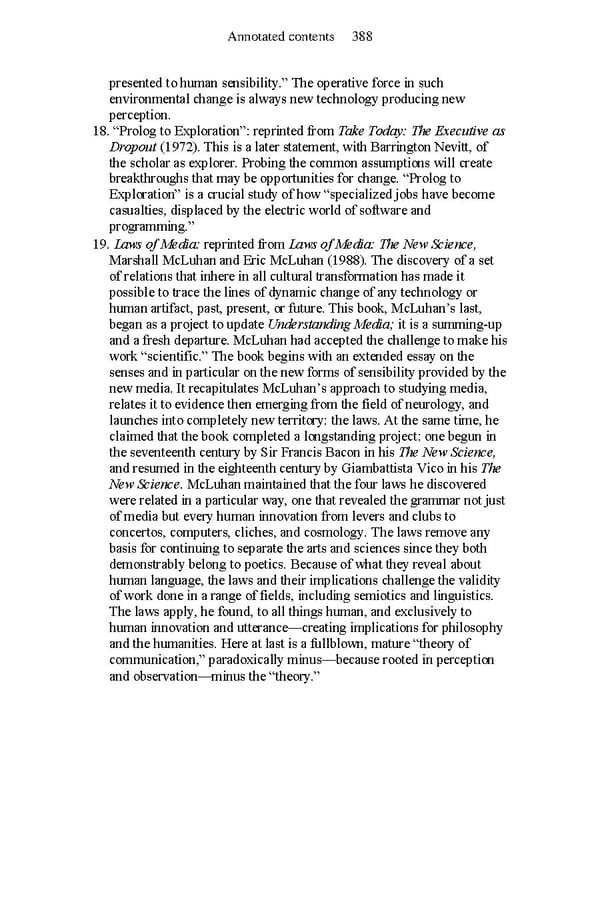Annotated contents 388 presented to human sensibility.” The operative force in such environmental change is always new technology producing new perception. 18. “Prolog to Exploration”: reprinted from Take Today: The Executive as Dropout (1972). This is a later statement, with Barrington Nevitt, of the scholar as explorer. Probing the common assumptions will create breakthroughs that may be opportunities for change. “Prolog to Exploration” is a crucial study of how “specialized jobs have become casualties, displaced by the electric world of software and programming.” 19. Laws of Media: reprinted from Laws of Media: The New Science, Marshall McLuhan and Eric McLuhan (1988). The discovery of a set of relations that inhere in all cultural transformation has made it possible to trace the lines of dynamic change of any technology or human artifact, past, present, or future. This book, McLuhan’s last, began as a project to update Understanding Media; it is a summing-up and a fresh departure. McLuhan had accepted the challenge to make his work “scientific.” The book begins with an extended essay on the senses and in particular on the new forms of sensibility provided by the new media. It recapitulates McLuhan’s approach to studying media, relates it to evidence then emerging from the field of neurology, and launches into completely new territory: the laws. At the same time, he claimed that the book completed a longstanding project: one begun in the seventeenth century by Sir Francis Bacon in his The New Science, and resumed in the eighteenth century by Giambattista Vico in his The New Science. McLuhan maintained that the four laws he discovered were related in a particular way, one that revealed the grammar not just of media but every human innovation from levers and clubs to concertos, computers, cliches, and cosmology. The laws remove any basis for continuing to separate the arts and sciences since they both demonstrably belong to poetics. Because of what they reveal about human language, the laws and their implications challenge the validity of work done in a range of fields, including semiotics and linguistics. The laws apply, he found, to all things human, and exclusively to human innovation and utterance—creating implications for philosophy and the humanities. Here at last is a fullblown, mature “theory of communication,” paradoxically minus—because rooted in perception and observation—minus the “theory.”
 Essential McLuhan Page 394 Page 396
Essential McLuhan Page 394 Page 396